Livestock & Poultry Situation Report in Dinagat Islands; Second Quarter 2022-2023 comparison
The total production of livestock and poultry increased by 1.48% from 2022 to 2023. This indicates a slight overall growth in meat and egg production. Livestock production had a minimal increase of 0.15%. While this increase is relatively small, it suggests that the production of livestock remained relatively stable between the two years. Poultry production increased by 8.70%, signifying a substantial growth in poultry meat and egg production.
The data indicates that there was a general increase in livestock and poultry production from the second quarter of 2022 to the same period in 2023. The most significant increases were observed in cattle, chicken, chicken eggs, and duck production. However, carabao and duck egg production experienced substantial decreases. These changes in production levels can be influenced by factors such as consumer demand, market trends, and changes in farming practices.
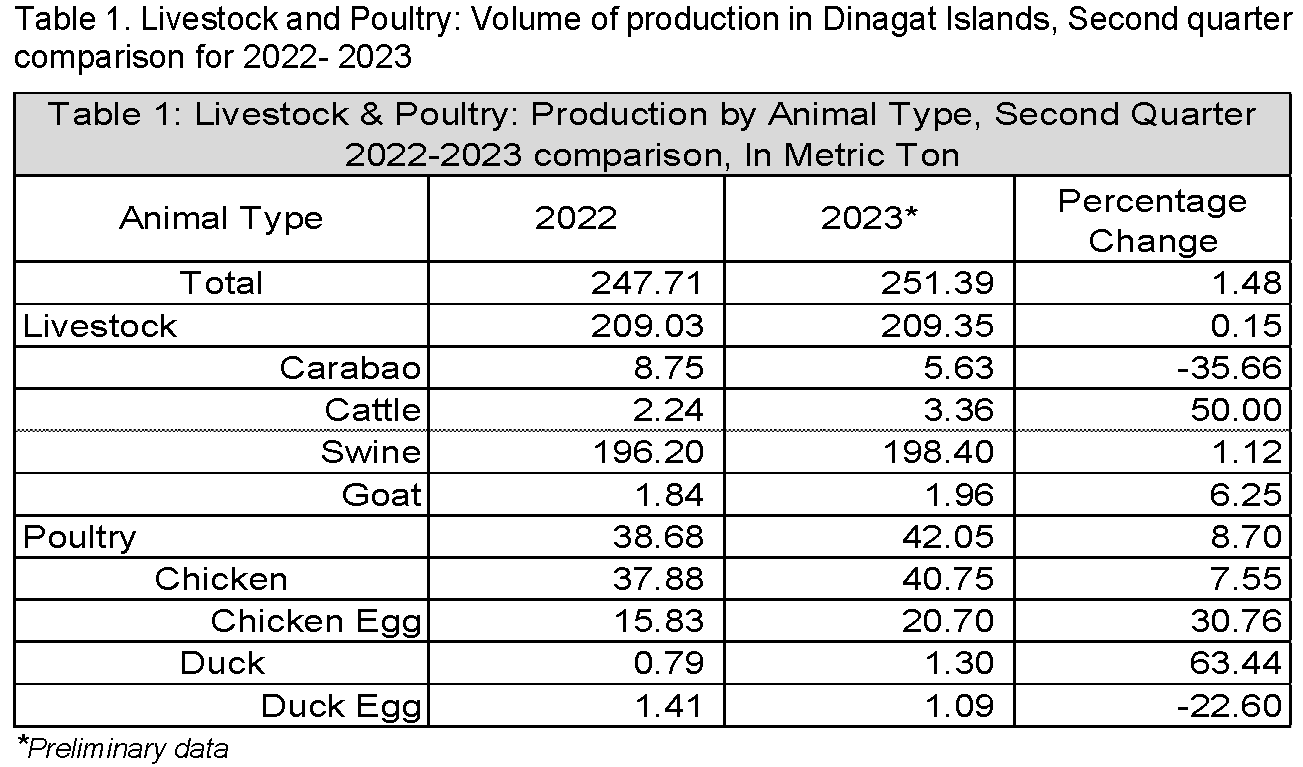
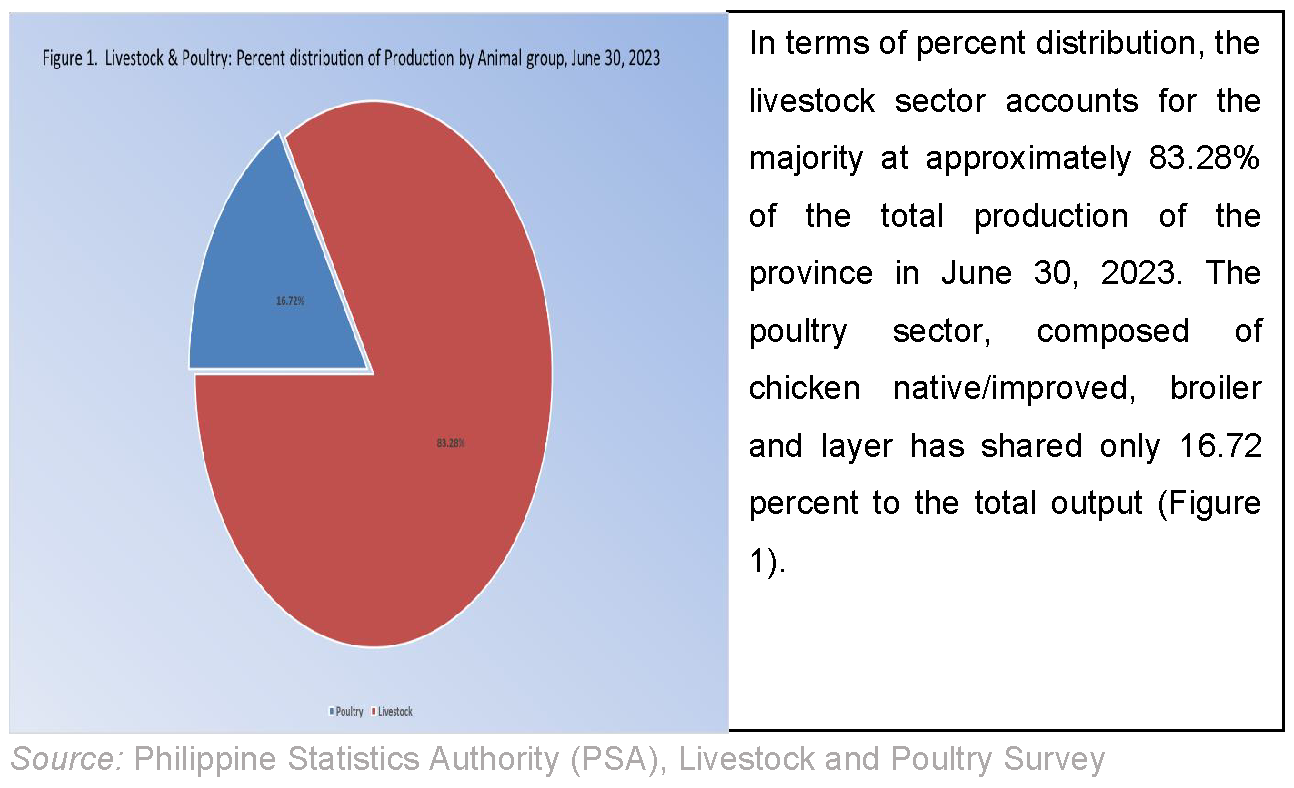
The total inventory of livestock and poultry as of June 30, 2023 is 51,036 heads, representing a 14.08% decrease compared to 2022. This indicates a significant overall reduction in the number of animals. The result suggests a general trend of decreasing livestock and poultry populations in 2023 compared to the previous year, with significant reductions in swine, native chicken, and duck populations. However, there are notable exceptions with increases in broiler, layer, and gamefowl populations, which could be influenced by various factors including market demand, industry practices, breeding programs, disease occurrence, and government interventions and restrictions. These changes in animal inventory may have economic and agricultural implications. (Table 2).
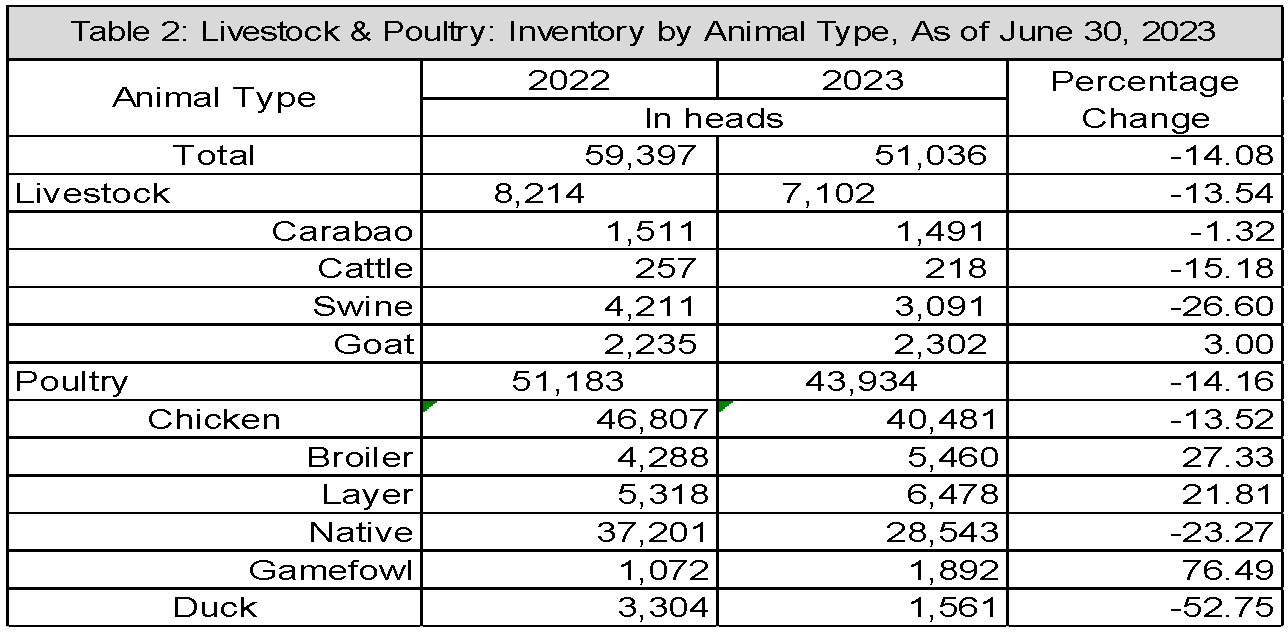
Livestock inventory decreased by 13.54% on average, with varying impacts on individual livestock types. Among these, swine experienced the most significant decrease at 26.60%, accompanied by a significant absolute decrease of 1,120 heads of swine.
Conversely, some poultry types exhibited growth, with gamefowl leading the way with a remarkable 76.49% increase, followed by broilers with a 27.33% increase. Meanwhile, native chicken, and duck populations faced declines of 23.27%, and 52.75%, respectively. These declines can impact various aspects of the livestock and poultry industry, from meat production to market dynamics and job opportunities.
In terms of percent distribution to the total inventory, chicken native/improved contributed the most share with 55.93 percent to the total swine & chicken inventory in the province during the end period of June 2023 (July round). This was followed by layer chicken with a contribution of 12.69 percent, broiler chicken with 10.70 percent, and swine with only 6.06 percent (Figure 4).
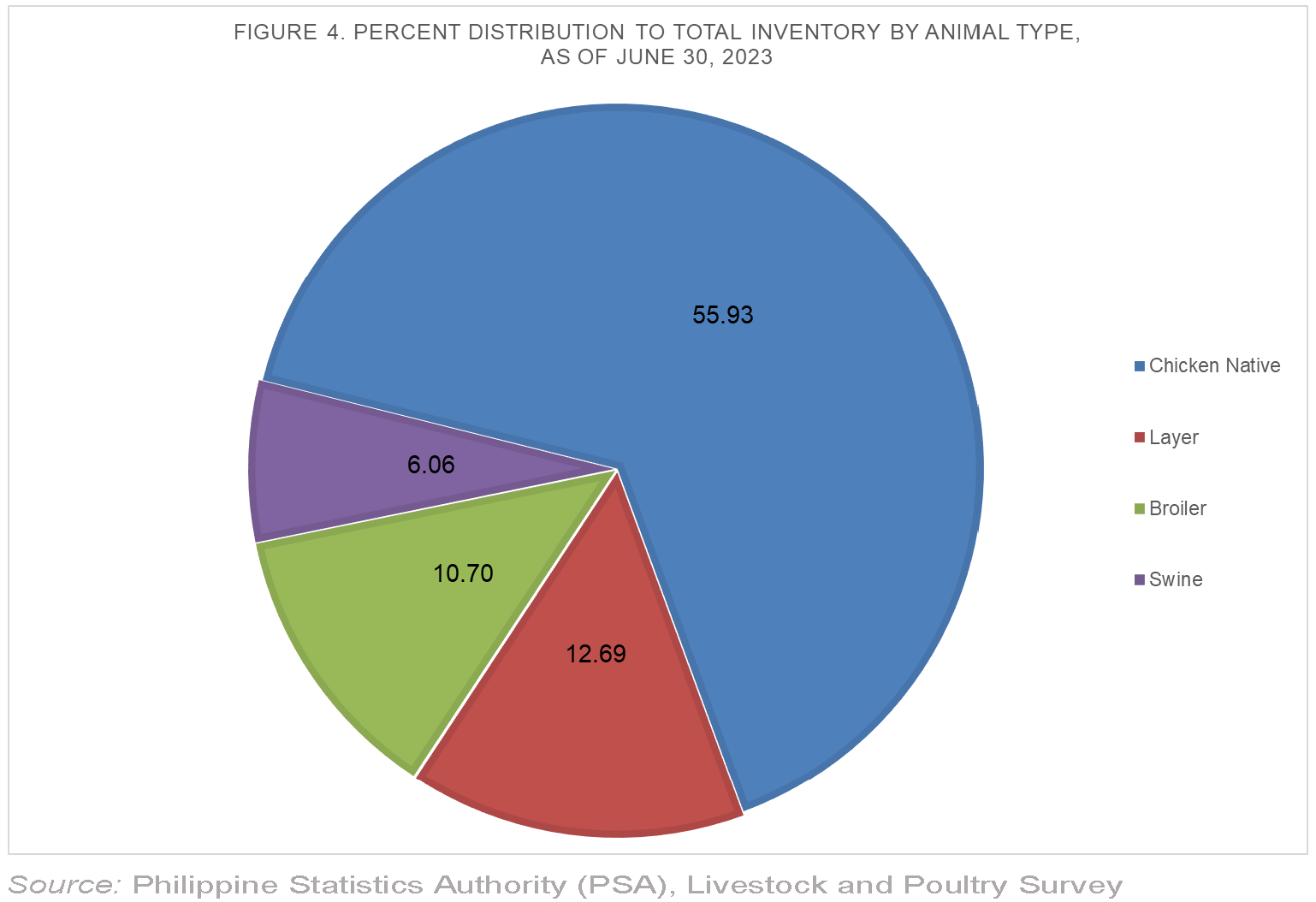
Chicken inventory decreased from 2022 to 2023, primarily driven by a significant reduction in the native chicken population. However, there were increases in both broiler and layer chicken populations, indicating potential shifts in the poultry industry's dynamics, including higher demand for broiler meat layer chicken eggs.
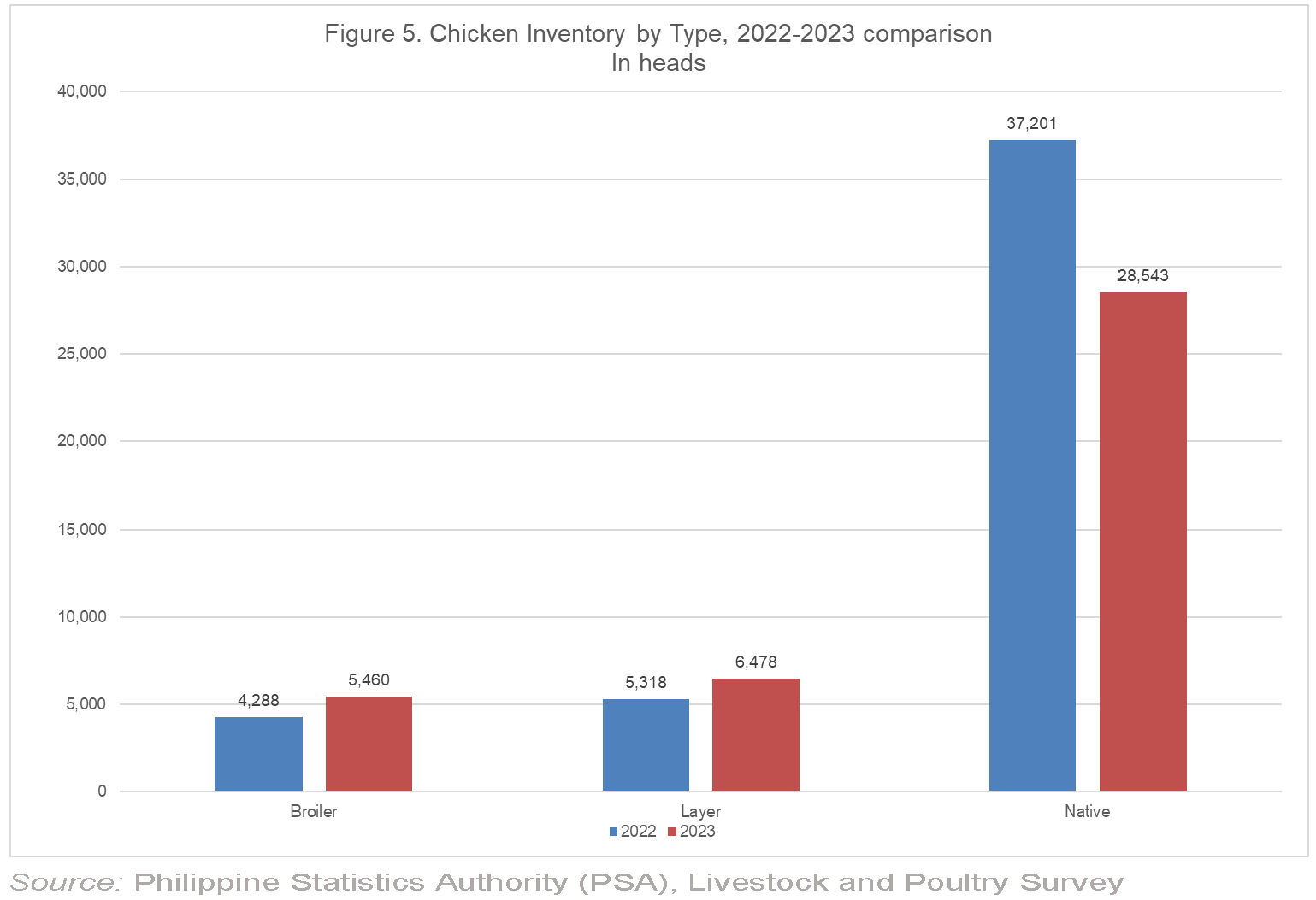
TECHNICAL NOTES
The Performance of Livestock and Poultry in Dinagat Islands presents the situation of the sector in terms of production and inventory by animal type. Moreover, data for this special release were collected by the Philippine Statistics Authority (PSA) through two (2) major surveys, namely: a) The Backyard Livestock and Poultry Survey (BLPS) and b) The Commercial Livestock and Poultry Survey (CLPS). Data collection for commercial and backyard farms was done quarterly for all animal types.
The reference period used for production and inventory covers four (4) quarters which includes; April Round (January-March 2022/2023), July Round (April-June 2022/2023), October Round (July-September 2022/2023, and January Round (October- December 2022/2023).
Definition of Terms
Livestock – farm animals kept or raised for consumption, work, or leisure. In general, poultry is separated as a distinct group of farm animals. For purposes of census and surveys, livestock covers only those that are tended and raised by an operator.
Poultry - a collective term for all domesticated avian for the purpose of food consumption or, the carcass of such avian dressed/processed for human consumption.
Animal Inventory (also, Animal Population) – the number of domesticated animals in head present in the farm at specific reference date.
Backyard Farm/Raiser-refers to any farm or household raising at least one head of animal or bird and does not qualify as a commercial farm.
Dressing-the progressive separation on the dressing floor of food animal into carcass, offal and inedible by- products.
Slaughter- refers to butchering of animal for the purpose of human consumption.
Slaughterhouse/Dressing Plant- the premises that are approved and registered by a controlling authority in which food animals/birds are slaughtered and dressed for human consumption.
(Sgd.)GLENNBOY C. LISTON
Chief Statistical Specialist

